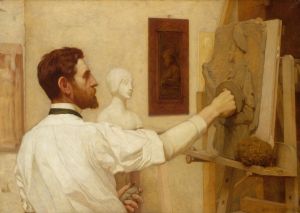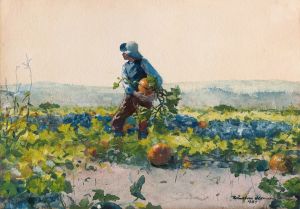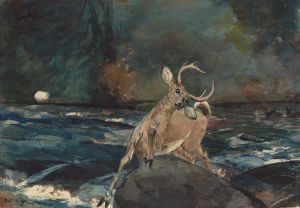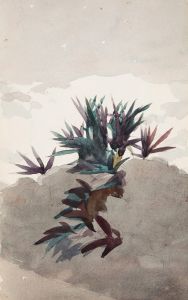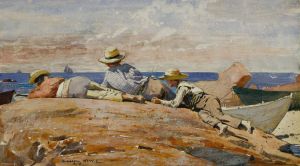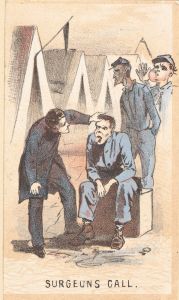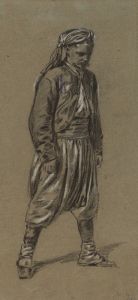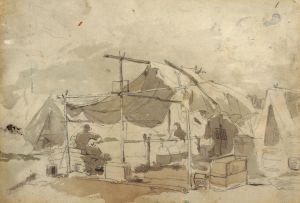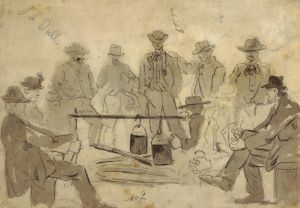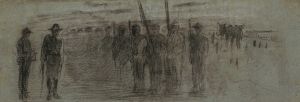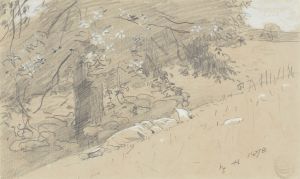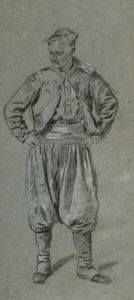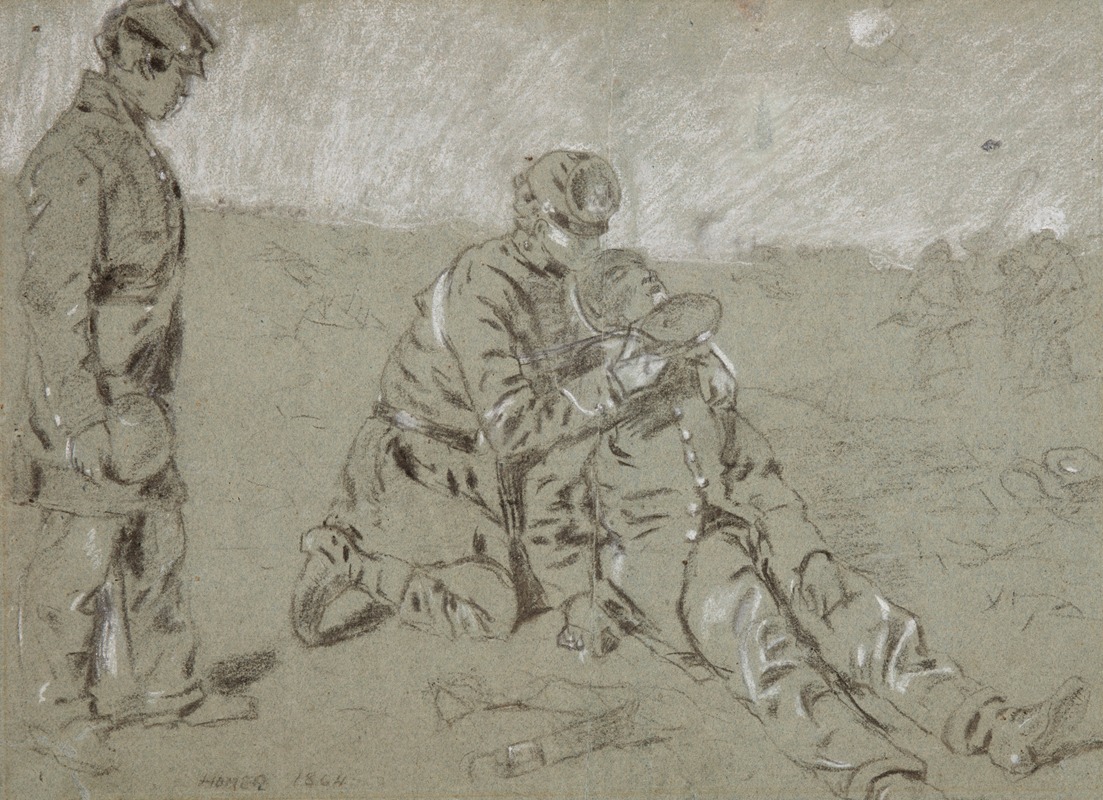
Soldier Giving Water to a Wounded Companion
A hand-painted replica of Winslow Homer’s masterpiece Soldier Giving Water to a Wounded Companion, meticulously crafted by professional artists to capture the true essence of the original. Each piece is created with museum-quality canvas and rare mineral pigments, carefully painted by experienced artists with delicate brushstrokes and rich, layered colors to perfectly recreate the texture of the original artwork. Unlike machine-printed reproductions, this hand-painted version brings the painting to life, infused with the artist’s emotions and skill in every stroke. Whether for personal collection or home decoration, it instantly elevates the artistic atmosphere of any space.
"Soldier Giving Water to a Wounded Companion" is a painting by the American artist Winslow Homer, created in 1864. This work is an example of Homer's early career as a painter and illustrator, during which he focused on themes related to the American Civil War. The painting is notable for its depiction of a moment of compassion and humanity amidst the brutality of war.
Winslow Homer was born on February 24, 1836, in Boston, Massachusetts. He began his career as a commercial illustrator and gained recognition for his work as a magazine illustrator during the Civil War. His experiences as an artist-correspondent for Harper's Weekly, where he documented the war, significantly influenced his later work as a painter.
"Soldier Giving Water to a Wounded Companion" captures a poignant scene on the battlefield. The composition centers on two soldiers: one is wounded and lying on the ground, while the other kneels beside him, offering a canteen of water. The painting is rendered with a sense of realism and attention to detail, characteristic of Homer's style. The background is sparse, focusing the viewer's attention on the interaction between the two figures.
The painting reflects Homer's ability to convey emotion and narrative through his art. The act of giving water to a wounded comrade symbolizes the themes of camaraderie, sacrifice, and the human cost of war. This work, like many of Homer's Civil War pieces, provides a more personal and intimate perspective on the conflict, contrasting with the grandiose and heroic depictions often found in other contemporary works.
Homer's Civil War paintings, including "Soldier Giving Water to a Wounded Companion," are significant for their historical and artistic value. They offer insight into the experiences of soldiers and the realities of war, while also showcasing Homer's developing skills as a painter. His use of light, shadow, and composition in this painting demonstrates his growing mastery of these elements, which would become more pronounced in his later works.
After the Civil War, Winslow Homer continued to evolve as an artist, eventually becoming one of the most important American painters of the 19th century. His later works, such as "The Gulf Stream" and "Snap the Whip," further established his reputation and showcased his versatility in subject matter and technique.
"Soldier Giving Water to a Wounded Companion" remains an important piece in Homer's oeuvre, representing his early engagement with themes of war and human compassion. It is a testament to his ability to capture the essence of a moment and convey deep emotional resonance through his art. The painting is held in high regard by art historians and continues to be studied and appreciated for its historical significance and artistic merit.





